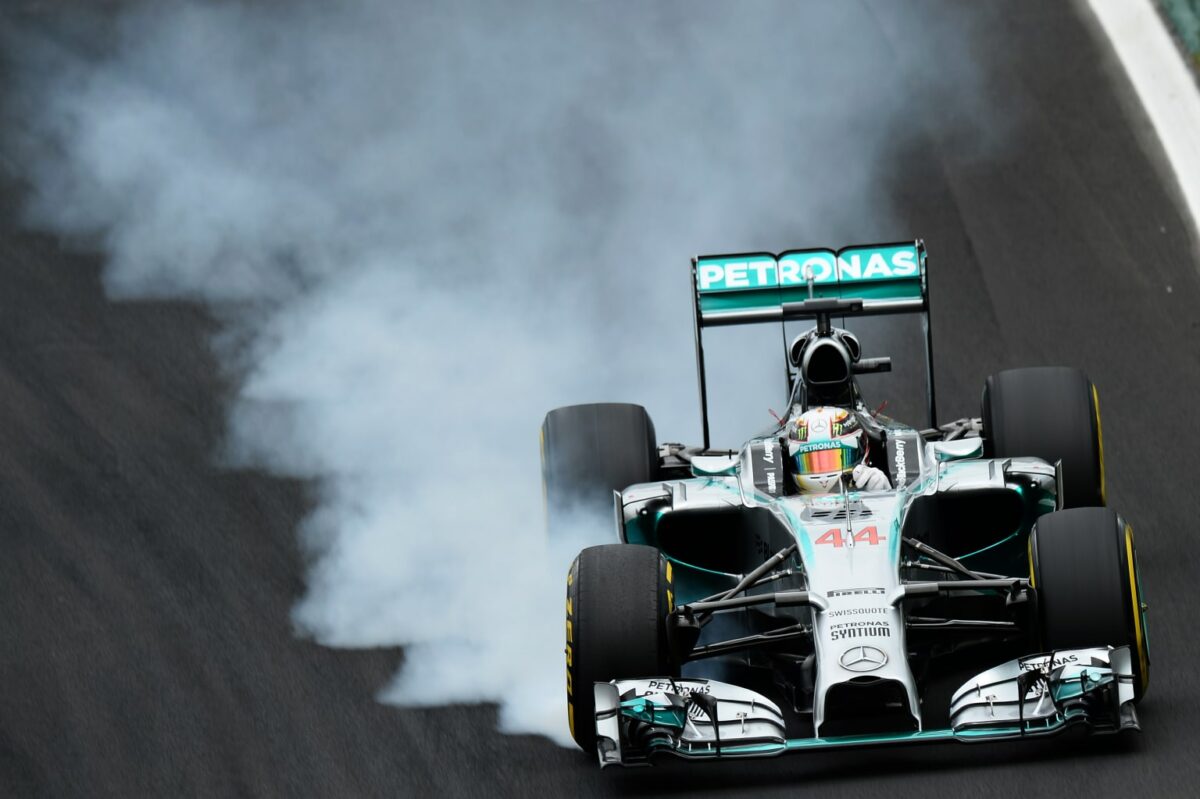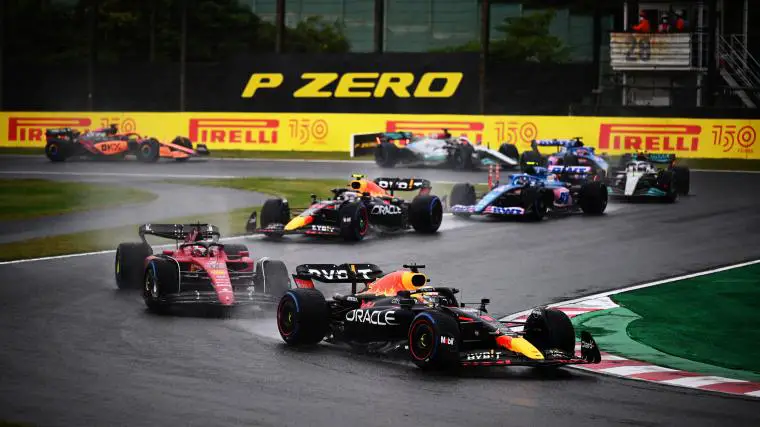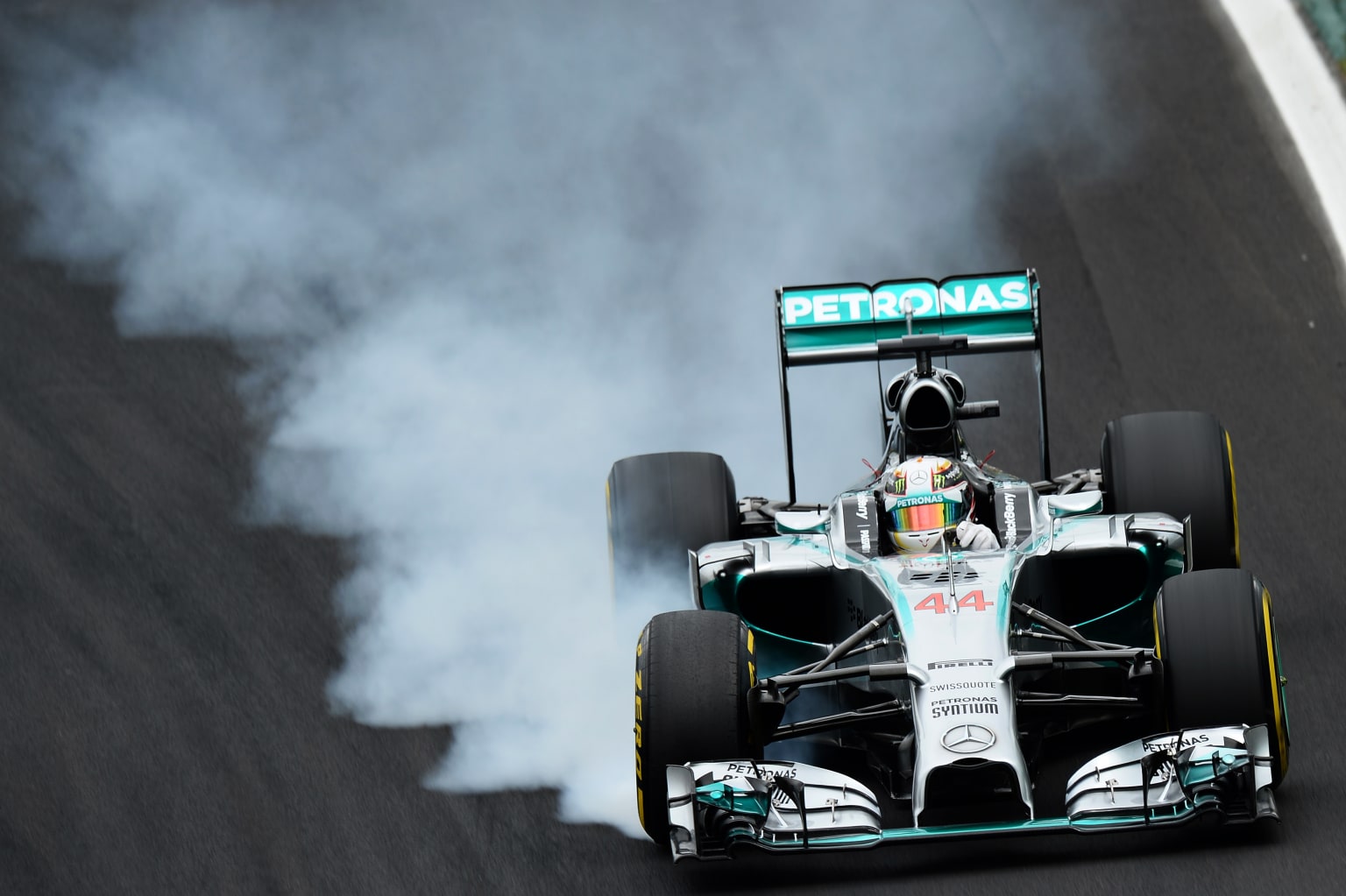Here’s everything you need to know about what does lock up mean in f1?
In Formula 1, “lock-up” refers to a situation when a driver applies the brakes too hard or too suddenly, causing one or more wheels to lose traction with the track surface. This loss of traction prevents the wheels from rotating freely and results in a skid or slide, creating a flat spot on the tire.
Lock-ups are caused by a combination of factors, such as excessive brake pressure, improper brake balance, or aggressive driving techniques. It can also occur when the driver misjudges the braking point or faces adverse track conditions, such as low grip or uneven surfaces.

Lock-ups can lead to performance issues, as flat-spotted tires can degrade quickly and may cause vibrations, affecting the car’s handling and lap times. Skilled drivers try to avoid lock-ups by finding the right balance between braking force and track conditions during races.
What causes Lock Up in F1?
Let us take a look at the top causes of Lock Up in Formula One.
Brake Pressure and Balance: Lock-ups often happen when a driver applies excessive brake pressure. If a driver pushes the brake pedal too hard or too abruptly, it can cause one or more wheels to lose traction and skid. Additionally, an improper brake balance between the front and rear wheels can lead to uneven braking forces, increasing the likelihood of a lock-up.
Track Conditions: The condition of the track surface plays a significant role in lock-ups. Low-grip surfaces, dusty or dirty patches, and uneven tarmac can reduce tire adhesion, making it easier for the wheels to lock up under heavy braking.

Tire Temperature and Wear: Tire temperature affects their grip levels. Cold tires might offer reduced traction, while overheated tires may lose grip as well. Additionally, worn-out tires might be more susceptible to locking up due to reduced tread depth.
Driver Skill and Technique: Driving an F1 car requires immense skill and precision. Aggressive or erratic driving techniques, especially under braking, can increase the likelihood of lock-ups. Smooth and controlled braking is essential to avoid excessive wheel slip.
Aerodynamics and Downforce: F1 cars generate significant downforce, which helps with cornering. However, this downforce can affect the weight distribution and load on the tires under braking. Sudden changes in downforce or aerodynamic balance can impact the car’s stability and cause lock-ups.
More Formula One News
- Lewis Hamilton doesn’t support IOC’s decision on Black Lives Matter gear during Olympics
- Max Verstappen left surprised as he reaches 100 race milestone with Red Bull
- Damon Hill left in awe after Lewis Hamilton racks up 100 poles in F1 ahead of 2021 Spanish GP
Follow our dedicated Formula One page for instant Formula One news and updates

